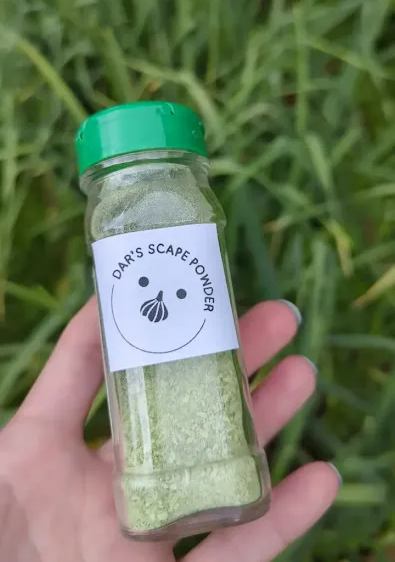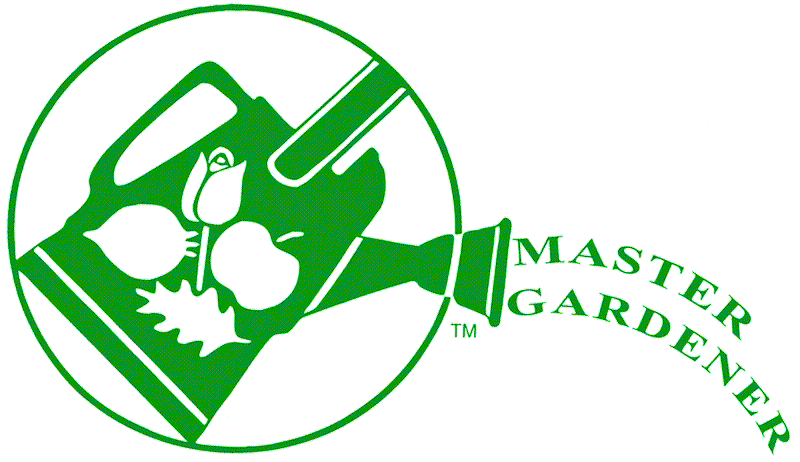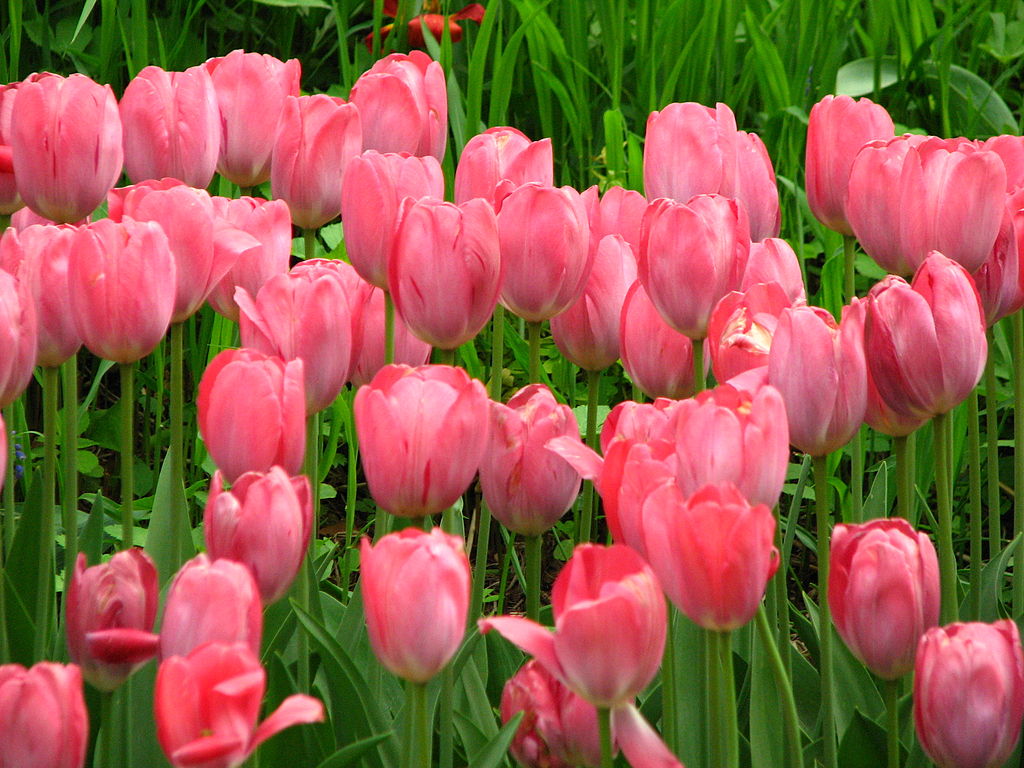
Garlic Illustration by Carlie Hamilton
If you’ve ever grown garlic and noticed a curly green shoot rising from the centre of the plant in early summer – that’s the garlic scape! Many new growers aren’t sure what to do with it or even whether to remove it. The answer? Yes, you should cut it. Here’s why that’s good for your garlic and your spice cupboard.
What Are Garlic Scapes?
Garlic scapes are the immature flowering stems of hardneck garlic. If left to grow, the scape will eventually straighten out and produce a bulbils flower bloom. The flowering process takes a lot of energy that diverts carbohydrates and nutrients away from the underground bulb. By removing the scape while it’s young and curly, you’ll redirect the plant’s energy back to bulb development, which results in a larger, robust garlic bulb harvest.
What’s In a Scape?
Scapes don’t just look cool – they’re edible and nutritious. They are full of health supporting compounds and plant power like:
- Allicin, pronounced “Allison”, are formed when scapes are chopped. Allicin has antimicrobial properties that support our hearts and boost our immune systems.
- Sulfur compounds help the liver flush out toxins. These also dial down inflammation, making your body less achy and stressed on a cellular level.
- Antioxidants help shield cells from oxidative stress which play a role in aging and disease.
- They offer dietary Fiber and small amounts of Vitamins A, B6 and C
While garlic scapes flavor is milder than garlic cloves, they still pack plenty of health perks and make a great seasonal ingredient. Scapes can be turned into pesto, pickled, sautéed, blended into dressings – or my favorite: dried and ground into garlic scape powder.
Why Make Powder?
Garlic scapes are delicious fresh and can be stored in the fridge for up to two weeks, but in my experience, they don’t last much longer than that. Drying and grinding them into powder is a great way to preserve their flavour. You’ll end up with a homemade seasoning that is garlicky and herbaceous. It’s softer than garlic powder though and has a hint of a “green-savory” taste. I like to think of it as garlic powders gentler, fresh cousin.
How to Make Garlic Scape Powder
Harvest: Cut the scape when it makes a full curl. This is usually 2 – 4 weeks before the garlic bulb is ready to harvest.
Chop: Remove the flower bud from the scape. Flower buds are also edible, but not used for scape powder. Cut scapes into small, .5″ Inch, pieces so they dry faster.
Dry: Spread chopped scapes in a single layer on a mesh mat of a dehydrator and dry at 46 – 52°C (115 – 125°F). Scapes will be ready for grinding when they’re completely brittle and snap cleanly – they should not bend. This usually takes 12 hours but may vary depending on thickness and humidity. If they need longer, that’s perfectly fine – just be patient and let them dry fully.
Grind: Add scapes to a spice grinder or blender and whirl them into a fine powder.
Store: Keep powder in an airtight jar, out of sunlight and away from heat. If stored properly, garlic scape powder will keep for up to 1 year.
The Curl That Keeps on Giving

Photo Credit: Darlene Davis
By learning how to use scapes, you’re not just growing bigger garlic – you’re stretching your harvest in delicious ways. I encourage you to explore garlic scape recipes! You’ll truly be surprised just how many tasty options are out there. A little green curl can go a long way!
Not trying to get ahead of scape season, but if you’re wondering what to plant after you’ve harvested your garlic bulbs, check out this article from Sherry! It has some helpful tips to keep your garden productive and thriving.
References
Johnson, Rebecca L., Steven Foster, Tieraona Low Dog, and Michael J. Balick. National Geographic Guide to Medicinal Herbs: The World’s Most Effective Healing Plants. Washington, DC: National Geographic, 2010. Garlic: Pages 152 – 157.
West Coast Seeds: Dehydrated Garlic Scape Powder
Shang A, Cao SY, Xu XY, Gan RY, Tang GY, Corke H, Mavumengwana V, Li HB. Bioactive Compounds and Biological Functions of Garlic (Allium sativum L.). Foods. 2019
Farmers Market Nova Scotia, Garlic Scapes Profile, 2015





About The Author: Darlene Davis
Darlene is a passionate flower and vegetable gardener with a love for organic practices, pollinator-friendly planting and floriculture. She's currently transforming her backyard into a lush food forest. A graduate of the University of Guelph's Horticulture program, she's also completed training through the Floret Workshop and The Gardener’s Workshop.
More posts by Darlene Davis